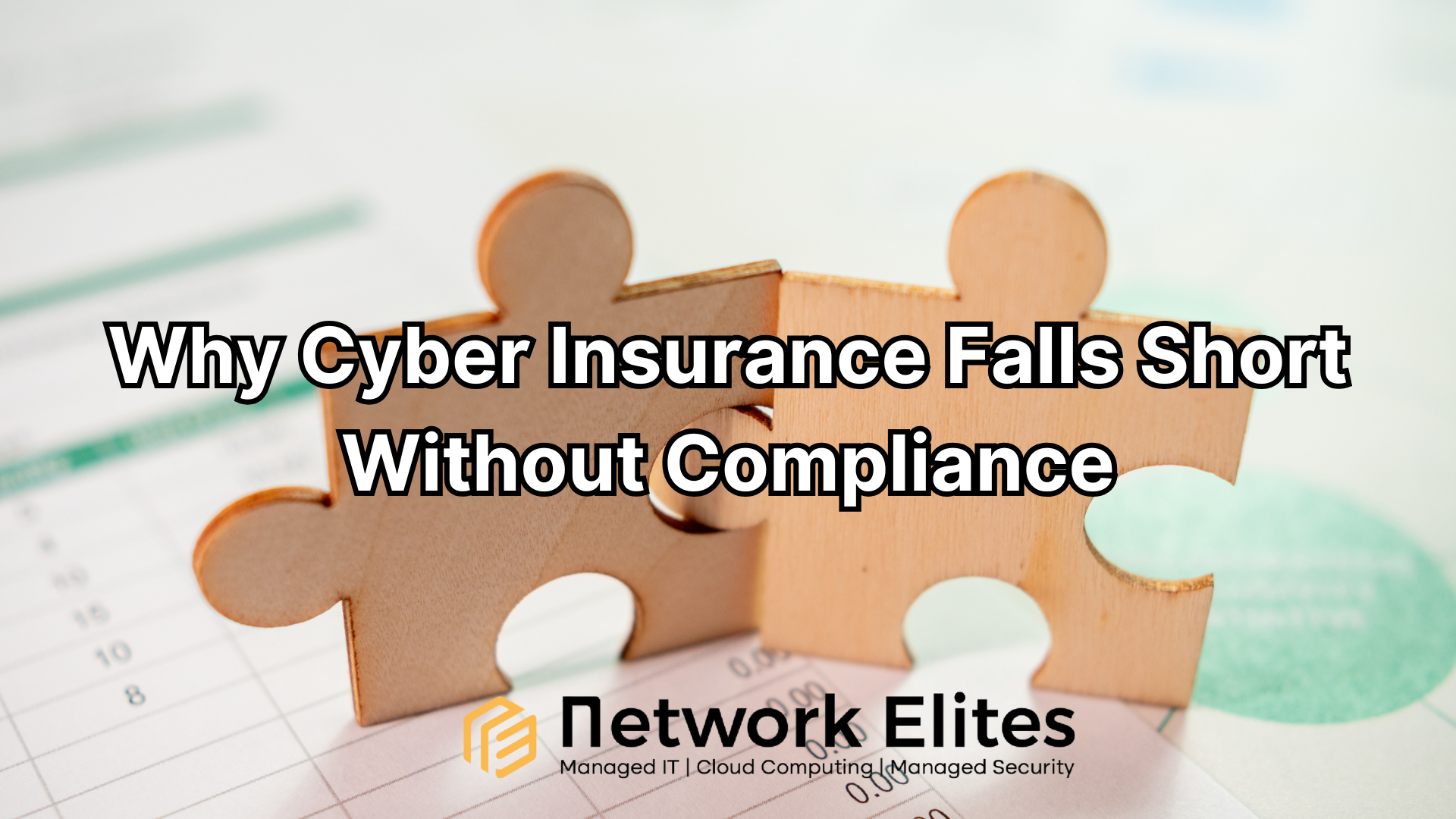Why Cyber Insurance Alone Can’t Protect You Without Compliance
Cyber insurance has become the go-to safeguard for businesses against digital threats. However, there’s an uncomfortable truth: without proper compliance, even the best policy can fall short when it matters most. Compliance isn’t just a regulatory checkbox—it’s the foundation that determines whether your insurance will actually work in your time of need.
This guide unpacks the critical link between compliance and insurance coverage, highlighting hidden requirements insurers use to deny claims. You’ll also discover actionable steps to strengthen compliance and ensure your business is protected when disaster strikes.
The Myth of Cyber Insurance as a Safety Net
Many business leaders see cyber insurance as a fallback plan—pay the premiums, and you’re covered. The reality is far more complex. Policies often come with strict compliance requirements that are easy to overlook but critical to claim approval.
Cyber insurers thoroughly investigate claims to verify compliance with the security standards outlined in your policy. If your business falls short, the consequences can be severe. Industry data shows that approximately 30% of cyber insurance claims are denied, with non-compliance being the leading cause. When claims are rejected, businesses are left covering recovery costs on their own.
How Compliance Gaps Void Your Coverage
Insurers evaluate compliance across several dimensions, and falling short in any of these areas can jeopardize your coverage.
Security Framework Requirements
Most policies require adherence to established security frameworks. Common requirements include:
- Multi-factor authentication across all systems
- Regular vulnerability testing and security assessments
- Documented incident response procedures
- Employee cybersecurity training
- Data backup and recovery protocols
Failure to meet these standards gives insurers grounds to deny claims. For example, a data breach caused by the lack of multi-factor authentication can be seen as negligence, invalidating your claim.
Documentation and Audit Trails
Strong security practices alone aren’t enough—you need thorough documentation to prove compliance. Insurers expect detailed records, such as:
- Updates to security policies and their implementation dates
- Employee training completion logs
- Patch management and system update records
- Test results from incident response simulations
- Vendor security assessments
Without these records, insurers may interpret a lack of evidence as poor governance, even if proper measures were in place.
Vendor and Third-Party Risk Management
Third-party vendors are a growing source of risk. Many cyber insurance policies now require businesses to have robust vendor risk management programs, including:
- Pre-onboarding security assessments for vendors
- Contractual security requirements for service providers
- Ongoing monitoring of vendor security practices
- Incident notification protocols for vendor-related breaches
If a breach stems from an inadequately vetted vendor and you can’t prove due diligence, coverage disputes are almost certain.
The Cost of Non-Compliance
Non-compliance doesn’t just threaten insurance claims—it creates a ripple effect of financial, operational, and reputational damage.
Financial Risks
When claims are denied due to non-compliance, businesses bear the full cost of incident recovery, often exceeding $1 million. These costs typically include:
- Forensic investigations and legal fees
- Regulatory fines and penalties
- Customer notification and credit monitoring
- Business interruption losses
- Public relations and reputation management
For many businesses, these expenses pose a serious threat to long-term survival.
Regulatory Penalties
Non-compliance often triggers regulatory scrutiny, particularly in industries like healthcare, finance, and retail. Insurers frequently share evidence of non-compliance with regulators, leading to additional fines and penalties that compound financial losses.
Reputational Damage
A breach caused by non-compliance erodes trust and damages your reputation. Customers are less likely to stay loyal if they perceive that data protection was neglected. This reputational fallout can lead to lost customers, reduced revenue, and difficulty attracting top talent.
Building a Compliance-Focused Strategy
The key to effective cybersecurity is treating compliance as a strategic foundation rather than an afterthought. By prioritizing compliance, businesses can reduce risks, meet insurance requirements, and ensure resilience against cyber threats.
Conduct Regular Compliance Audits
Quarterly audits help identify gaps before they become problems. These audits should assess:
- Policy implementation across departments
- Accuracy and completeness of documentation
- Employee adherence to security protocols
- Alignment of technology configurations with security standards
- Vendor compliance with contractual obligations
Frequent evaluations enable businesses to maintain continuous compliance rather than scrambling after an incident.
Invest in Security Automation
Manual compliance processes are inefficient and error-prone. Automation tools can streamline compliance efforts and reduce administrative burden by handling:
- Patch management and system updates
- Security configuration monitoring
- Employee training tracking
- Vulnerability scanning and remediation
- Incident response documentation
Automation not only mitigates human error but also creates detailed audit trails to support insurance claims.
Strengthen Incident Response Plans
A well-crafted incident response plan showcases your security maturity and ensures effective breach management. Key components include:
- Clear escalation protocols and communication guidelines
- Defined roles and responsibilities for the response team
- Regulatory notification timelines
- Evidence preservation and forensic procedures
- Business continuity and recovery strategies
Regularly testing and updating your plan ensures it stays relevant and effective as threats evolve.
Manage Vendor Risks Proactively
Vendors represent a significant attack surface. To minimize risks, implement a vendor risk management program that includes:
- Security assessments before onboarding
- Contractual obligations for security standards and breach notifications
- Continuous monitoring of vendor security practices
- Regular reviews of vendor access and permissions
Demonstrating due diligence in vendor management reduces the likelihood of supply chain attacks and strengthens your case with insurers.
Partnering with Security Professionals
Navigating compliance requirements often requires specialized expertise. Security professionals can help build and maintain effective compliance programs, ensuring your business is protected on all fronts.
Compliance Assessments
Professional assessments provide an objective review of your compliance posture. These evaluations typically cover:
- Policy and procedure reviews
- Technical security assessments
- Employee security awareness evaluations
- Vendor risk management audits
- Documentation and record-keeping checks
Ongoing Compliance Support
Compliance is an ongoing process, not a one-time task. Security professionals offer continuous support, including:
- Real-time compliance monitoring
- Policy updates to match evolving threats and requirements
- Training program creation and delivery
- Incident response planning and testing
- Vendor security assessments
This long-term approach ensures your compliance efforts remain effective as your business grows and threats evolve.
Maximizing Your Investment in Security
Cyber insurance and compliance aren’t standalone solutions—they work best together. Investing in compliance not only reduces risk but also protects your business from denied claims, regulatory penalties, and reputational harm.
A proactive, compliance-driven approach is the most cost-effective way to ensure your business is prepared for modern cyber threats. Don’t wait for a crisis to expose vulnerabilities—take action today.
At Network Elites, we specialize in helping businesses build robust security strategies that align with both risk management and insurance requirements. Our team can assess your compliance posture and create a customized plan to keep your business protected.
Contact us today to schedule a comprehensive security assessment and take the first step toward true cyber resilience.








